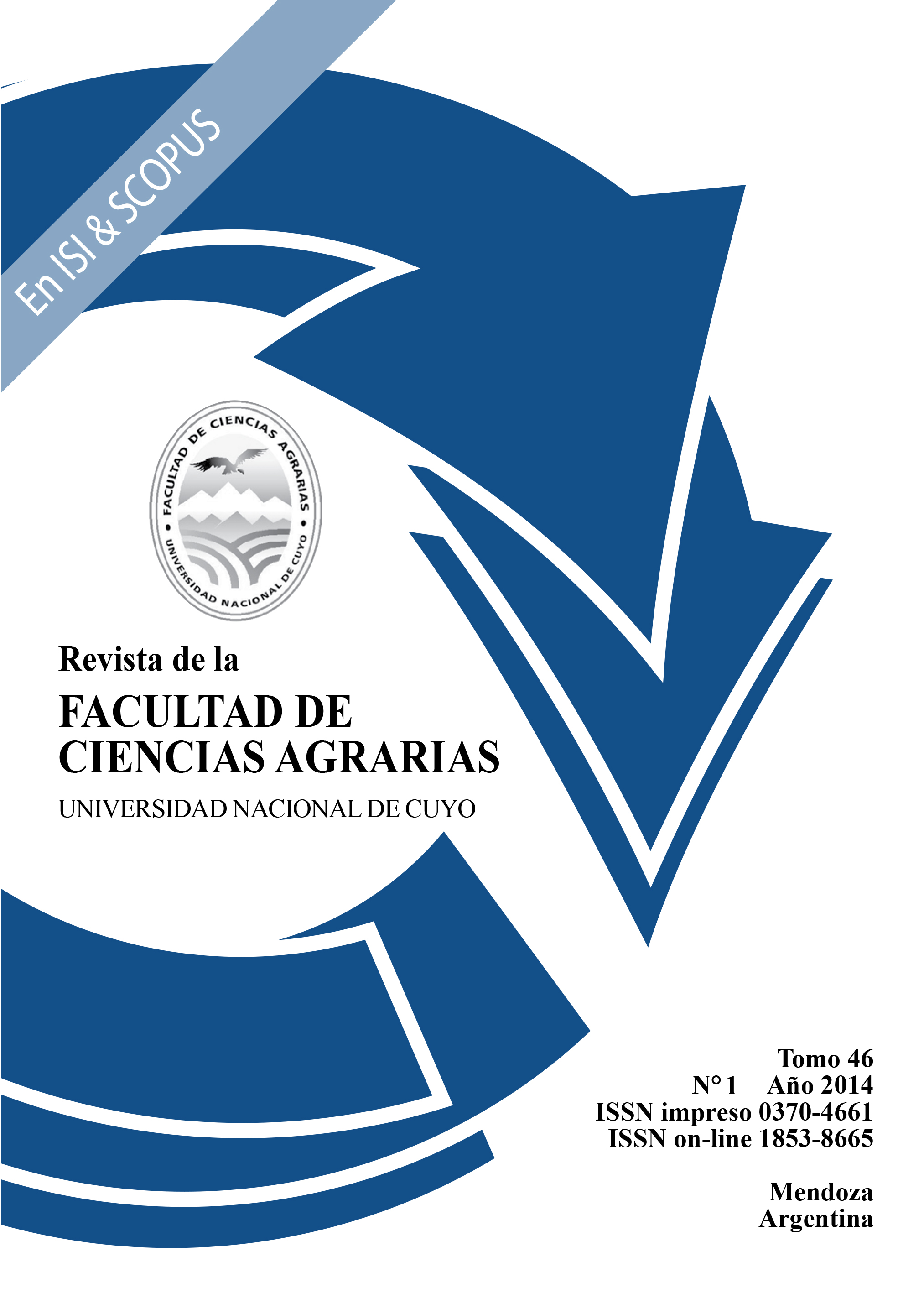Effects of Galleria mellonella cadavers infected with Heterorhabditis bacteriophora and Steinernema rarum, their macerates and dead infective juveniles on Meloidogyne javanica suppression
Keywords:
entomopathogenic nematodes, biological control, Heterorhabditis bacteriophora, Steinernema rarum, Meloidogyne javanicaAbstract
Nematodes of the Meloidogyne genus affect to most of crops of an economic importance in Argentina. Researches related to new control strategies are needed to reduce the damage produced by these organisms. The objective of this work was to compare the effects of Galleria mellonella cadavers infected with the Argentine isolates Heterorhabditis bacteriophora Rama Caída and Steinernema rarum NOE, cadaver macerates and dead infective juveniles (IJs) on M. javanica suppression. Experiments were performed using 24-well plates and pepper plants grown in a growth chamber. The entomopathogenic nematodes-infected G. mellonella cadavers, their cadaver macerates and dead IJs were effective in suppressing M. javanica second-stage juveniles under laboratory conditions. The use of H. bacteriophora-infected cadavers caused a significant decrease in the number of galls and egg masses on pepper plants parasitized by M. javanica, in a growth-chamber.
Downloads
Published
Issue
Section
License

This work is licensed under a Creative Commons Attribution-NonCommercial-ShareAlike 3.0 Unported License.
Aquellos autores/as que tengan publicaciones con esta revista, aceptan las Políticas Editoriales.



